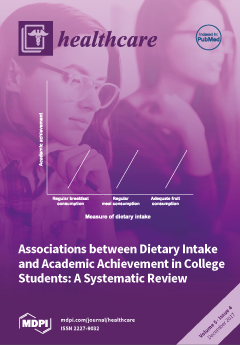Background: This study aimed to investigate differences in the association between socioeconomic status (SES) and glycemic control in type 2 diabetes mellitus (DM) across race by gender groups.
Methods: Using a convenient sampling strategy, participants were 112 patients with type 2
[...] Read more.
Background: This study aimed to investigate differences in the association between socioeconomic status (SES) and glycemic control in type 2 diabetes mellitus (DM) across race by gender groups.
Methods: Using a convenient sampling strategy, participants were 112 patients with type 2 DM who were prescribed insulin (ns = 38 Black women, 34 Black men, 14 White women, and 26 White men, respectively). Linear regression was used to test the associations between sociodemographic variables (race, gender, SES, governmental insurance) and Hemoglobin A1c (HbA1c) in the pooled sample and within subgroups defined by race and gender.
Results: In the pooled sample, neither SES nor governmental insurance were associated with HbA1c. However, the race by gender interaction approached statistical significance (B = 0.34, 95% CI = −0.24–3.00,
p =0.094), suggesting higher HbA1c in Black women, compared to other race by gender groups. In stratified models, SES (B = −0.33, 95% CI = −0.10–0.00,
p = 0.050), and governmental insurance (B = 0.35, 95% CI = 0.05–2.42,
p = 0.042) were associated with HbA1c for Black men, but not for any of the other race by gender subgroups.
Conclusion: Socioeconomic factors may relate to health outcomes differently across race by gender subgroups. In particular, SES may be uniquely important for glycemic control of Black men. Due to lack of generalizability of the findings, additional research is needed.
Full article






